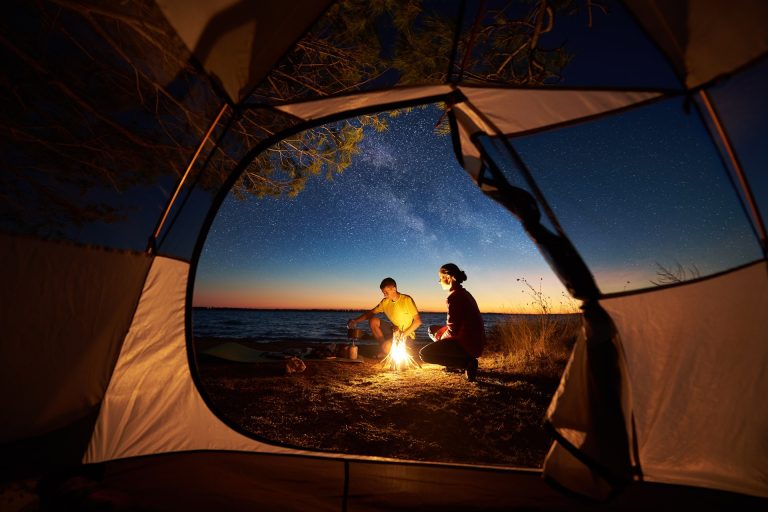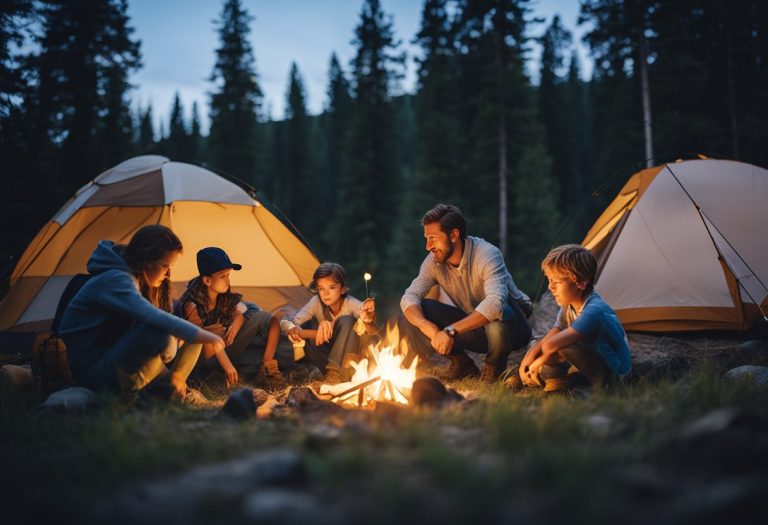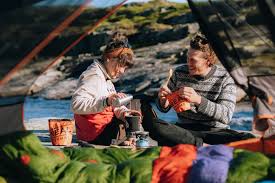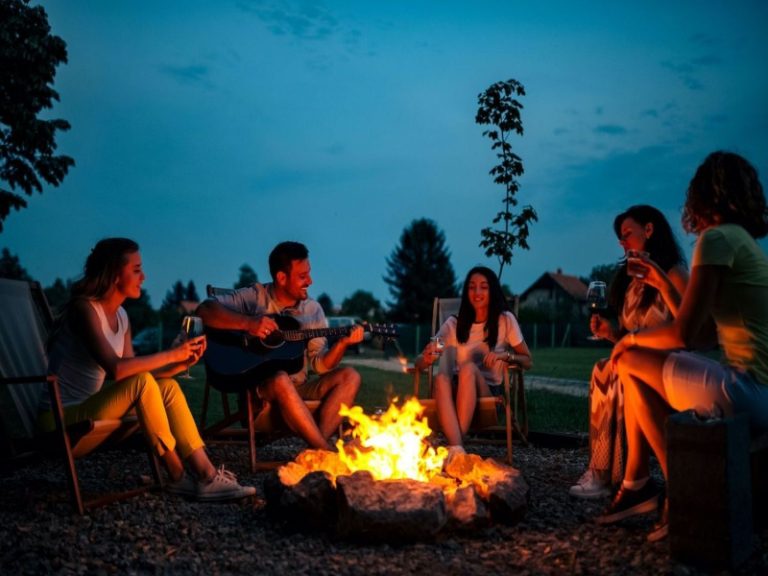16 Crucial Dos and Don’ts for a Respectful, Safe, and Enjoyable Camping Experience!
With its promise of starry nights, roaring campfires, and a welcome respite from the mundane, the great outdoors beckons. Camping is a wonderful way to strengthen relationships with loved ones, get back in touch with nature, and make lifelong memories. Like any wilderness trip, though, a little awareness and careful conduct go a long way toward guaranteeing a fun, safe, and ecologically conscious experience. With the help of this thorough guide, “Happy Camper Handbook: 16 Essential Do’s and Don’ts for a Safe, Fun, and Respectful Camping Adventure!” you will be able to confidently and thoughtfully traverse the campsite and the trails.
I. Setting Up Camp Smart: The Foundation for a Great Trip
Your campsite is your temporary home in the wild. Setting it up correctly is crucial for comfort and safety.
The Essential Do’s of Campsite Setup:
- DO Choose a Designated Campsite: In established campgrounds, stick to marked sites. This helps minimize environmental impact and ensures you have access to designated amenities.
- DO Select a Level Spot: Look for a flat area for your tent, free of rocks, roots, and standing water. This will make for a much more comfortable night’s sleep.
- DO Clear Your Tent Area: Remove any debris like pinecones, twigs, and sharp objects from under your tent footprint. This protects your tent floor and prevents damage.
- DO Pitch Your Tent Properly: Follow the manufacturer’s instructions carefully. Ensure all poles are secure, the rainfly is correctly attached, and the tent is staked down firmly.
- DO Organize Your Campsite: Designate areas for cooking, sleeping, gear storage, and waste disposal. This helps keep things tidy and prevents accidents.
The Critical Don’ts of Campsite Setup:
- DON’T Camp Too Close to Water Sources: Maintain a respectful distance from lakes, rivers, and streams to protect water quality and riparian ecosystems. Check local regulations for specific distances.
- DON’T Pitch Your Tent Under Dead or Weak Trees (Widowmakers): These trees or branches can fall unexpectedly, posing a serious hazard.
- DON’T Block Trails or Access Points: Ensure your campsite setup doesn’t obstruct pathways for other campers or emergency personnel.
- DON’T Spread Out Excessively: Keep your campsite footprint compact to minimize your impact on the surrounding vegetation.
II. Campfire Considerations: Warmth, Cooking, and Responsibility
Campfires are a quintessential part of the camping experience, but they require careful management.
The Essential Do’s of Campfires:
- DO Check Fire Regulations: Be aware of any fire bans or restrictions in your area. Use designated fire rings or build a responsible campfire in a clear area away from flammable materials.
- DO Gather Firewood Responsibly: Collect dry, dead, and down wood from the ground. Never cut live trees or branches. Bring your own firewood if allowed, to prevent the spread of invasive species.
- DO Keep Your Fire Small and Contained: Only burn what you need and keep the fire within the designated area.
- DO Have Water and a Shovel Ready: Keep a bucket of water and a shovel nearby to extinguish the fire quickly in case of emergency or when you’re done.
The Critical Don’ts of Campfires:
- DON’T Leave Your Campfire Unattended: Always supervise your fire and ensure it is completely extinguished before going to sleep or leaving your campsite.
- DON’T Use Accelerants Like Gasoline: These are dangerous and can cause uncontrolled fires.
- DON’T Burn Trash or Food Scraps: These create unpleasant odors, attract animals, and don’t burn completely. Pack out all waste.
- DON’T Build an Excessively Large Fire: It wastes wood and can be harder to control.
III. Wildlife Wisdom: Coexisting Respectfully
Sharing the wilderness with animals is a privilege. Understanding how to coexist peacefully is crucial for their safety and yours.
The Essential Do’s of Wildlife Encounters:
- DO Store Food Properly: Keep all food, toiletries, and scented items in airtight containers and store them in a bear-resistant canister (if required), hung from a tree limb away from your tent, or in your vehicle.
- DO Make Noise While Hiking: This helps alert wildlife to your presence and reduces the chance of surprising them.
The Critical Don’ts of Wildlife Encounters:
- DON’T Feed Wildlife: Feeding animals makes them dependent on humans, can alter their natural behaviors, and may lead to dangerous encounters.
- DON’T Approach or Harass Animals: Observe wildlife from a safe distance. Never try to touch, feed, or chase them.
- DON’T Leave Food Scraps or Trash Around Your Campsite: These attract animals and can be harmful to them.
IV. Leaving No Trace: Protecting Our Wild Spaces
Our actions in the outdoors have a direct impact on the environment. Practicing Leave No Trace principles ensures these spaces remain beautiful for future generations.
The Essential Do’s of Leave No Trace:
- DO Pack Out All Trash: This includes food wrappers, packaging, and any other waste you generate.
- DO Minimize Campfire Impacts: As mentioned earlier, use existing fire rings, keep fires small, and burn only dead and down wood.
- DO Respect Wildlife and Leave What You Find: Observe animals from a distance and avoid taking souvenirs like rocks, plants, or artifacts.
The Critical Don’ts of Leave No Trace:
- DON’T Leave Food Scraps or Biodegradable Waste Behind: While it might seem natural, these can still attract animals and disrupt the ecosystem. Pack it all out.
- DON’T Create New Trails or Shortcuts: Stick to established paths to prevent erosion and damage to vegetation.
- DON’T Carve or Deface Trees or Rocks: Leave natural surfaces undisturbed.
- DON’T Pollute Water Sources: Dispose of human waste and wash yourself and dishes away from water sources.
V. Personal Safety and Preparedness: Being Ready for Anything
Being prepared for potential challenges ensures a safer and more enjoyable trip.
The Essential Do’s of Personal Safety:
- DO Tell Someone Your Plans: Inform a friend or family member of your destination, planned route, and expected return time.
- DO Carry a Well-Stocked First-Aid Kit: Know how to use it for treating minor injuries.
- DO Be Aware of Weather Forecasts: Check the weather before your trip and be prepared for changing conditions.
The Critical Don’ts of Personal Safety:
- DON’T Hike or Explore Alone, Especially in Unfamiliar Areas: Go with a buddy.
- DON’T Rely Solely on Electronic Devices for Navigation: Carry a map and compass and know how to use them.
- DON’T Ignore Warning Signs or Trail Closures: These are in place for your safety and the protection of the environment.
Conclusion: Be a Happy and Responsible Camper!
By embracing these essential do’s and don’ts, you’ll not only ensure your own safety and enjoyment but also contribute to the preservation of the beautiful natural spaces we all cherish. Camping is a privilege, and with a little knowledge and consideration, we can all be happy and responsible campers, leaving only footprints and taking only memories. So, pack your bags, prepare thoughtfully, and get ready to experience the wonders of the great outdoors!







